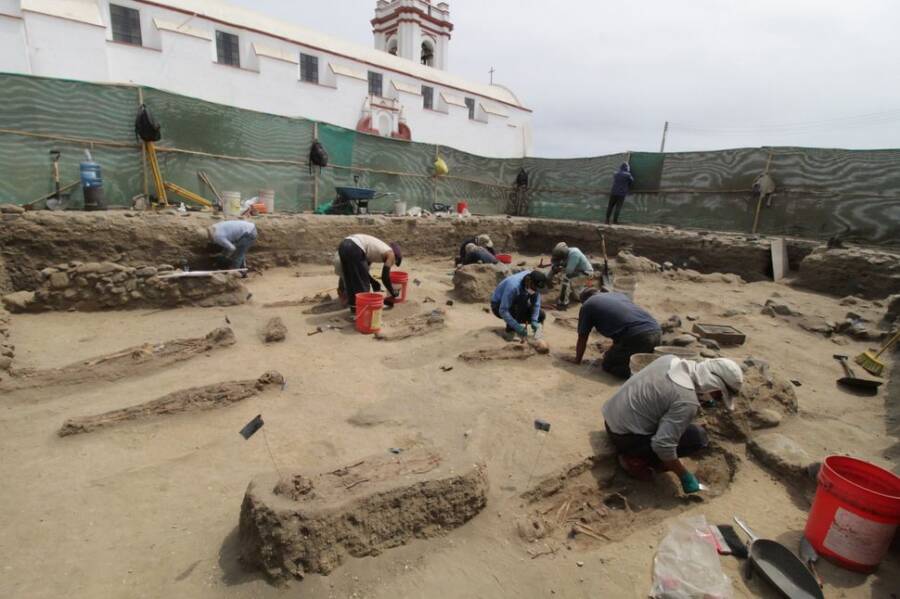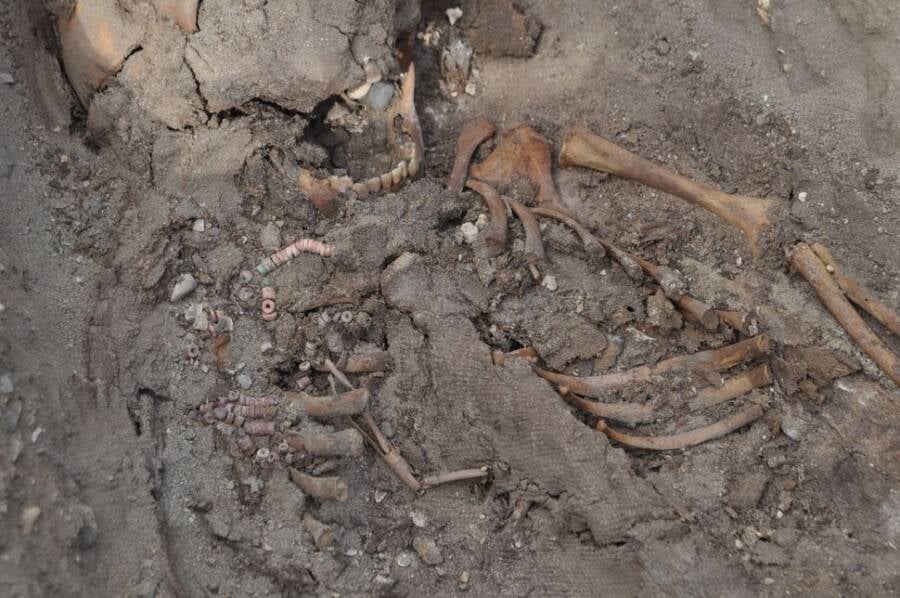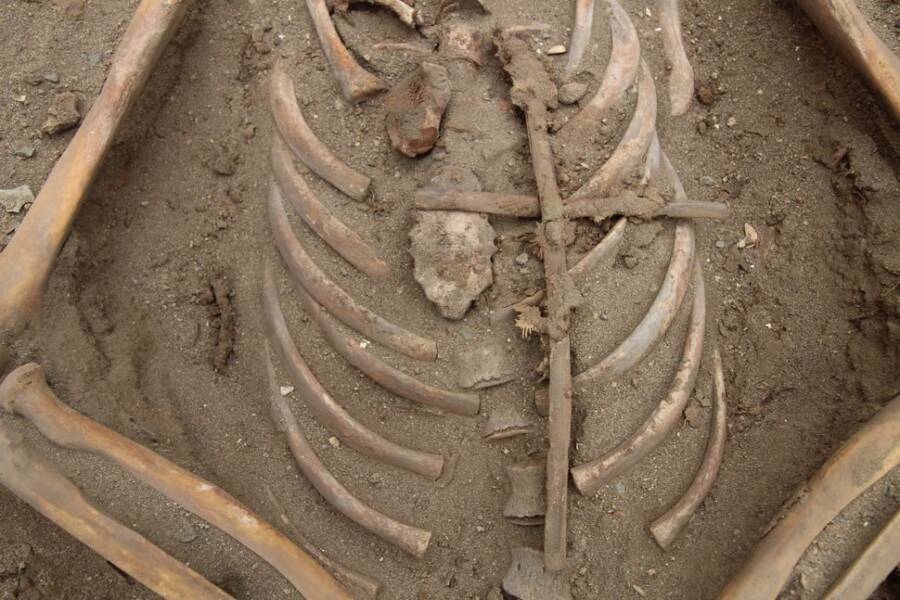The skeletons showed signs of osteomyelitis variolosa, a bone infection that is triggered by the smallpox virus, which was brought to the region by Spanish colonizers.

Gabriel Prieto/Huanchaco Archaeological ProgramArchaeologists exhume remains from the early colonial cemetery in Huanchaco, Peru.
Researchers studying human remains at a 16th-century cemetery in Huanchaco, Peru, recently stumbled upon the skeletons of two Inca toddlers who seemingly died from smallpox.
The children’s bones showed evidence of osteomyelitis variolosa, a bone infection triggered by the smallpox virus, which was brought to the region by Spanish colonizers. These are the first cases of osteomyelitis variolosa ever identified in South America.
In light of this discovery, researchers are hoping to learn more about the historical timeline of the smallpox epidemic in the New World.
Archaeologists Unearth The Remains Of Inca Toddlers
Archaeologists began excavating an early colonial cemetery in Huanchaco, a small fishing town on the northwest coast of Peru, in 2016. That year, the team unearthed an intriguing find: the body of an Inca toddler afflicted with smallpox.
Then, in 2019, the archaeologists discovered another Inca toddler with the same condition.

Gabriel Prieto/Huanchaco Archaeological ProgramOne of the 18-month-old children who died from smallpox 500 years ago.
The cemetery was built by the Spanish between 1535 and 1540 and features 120 burials from the early days of Spanish conquest in the area. Of those 120 burials, 90 were children, with 60 of them under the age of five. Researchers believe the high number of child burials indicates the spread of the novel disease that targeted the most vulnerable section of the population.
In their study, published in the International Journal of Paleopathology, researchers described the burial of the two toddlers. Their remains showed signs of destructive lesions caused by osteomyelitis variolosa, a bone infection triggered by the smallpox virus.
“We can guess that it is possible, after their symptoms started, that they lived with smallpox for a few weeks,” lead author Khrystyne Tschinkel, a bioarchaeologist at Hamline University in Minnesota, told Live Science, “because there was enough time for the bones to become severely infected.”
Additionally, the researchers discovered reed crosses buried with the children, reflecting the deceased’s conversion to Christianity — either voluntary or forced.
This discovery marks the earliest known cases of osteomyelitis variolosa in South America and reveals new information about the spread of smallpox in the New World.
The Epidemic Of Smallpox In The New World
The smallpox virus has existed for at least 3,000 years. Signs of the disease have even been seen in ancient Egyptian mummies. The illness has taken the lives of millions of people throughout history, but there is much researchers still don’t know about its spread.
When the Spanish arrived in the New World in 1492, they inadvertently brought the disease with them. It quickly spread to the Indigenous populations, eradicating entire communities who had no immunity to the virus.

Gabriel Prieto/Huanchaco Archaeological ProgramAn adult skeleton buried at the Huanchaco cemetery in Peru.
Indigenous groups in Peru suffered a similar fate when the Spanish first arrived in 1526. By 1620, the disease had claimed the lives of 70 percent of the Inca population.
However, unlike the recently discovered Inca toddlers, most victims of the smallpox virus did not experience bone degradation. This makes it difficult for researchers to pinpoint smallpox victims solely through centuries-old human remains.
This fact makes this most recent discovery so important for understanding the general timeline of the disease’s spread throughout early colonial Peru.
“Currently, there is a lack of reliable data on disease origins, spread, and their impact on specific Indigenous populations in North and South America. Additionally, we have a limited understanding of early colonialism and the period before the time of the reducciónes,” Tschinkel stated to All That’s Interesting in an email.
“If we start to identify more of these cases,” Tschinkel said, “we can start to create a better understanding of how diseases spread and where outbreaks occurred during the early-colonial time period. What we can say is that there was likely a smallpox outbreak in Huanchaco around 1540, and if it was happening there it was likely it was also happening nearby. It is a small piece to the puzzle, and I hope to continue to add more pieces.”
After reading about the Inca toddlers with smallpox, dive into the story of the Llullaillaco Maiden, the 500-year-old well-preserved Inca sacrifice victim. Then, explore 39 vintage images of expeditions to Central and South America.





